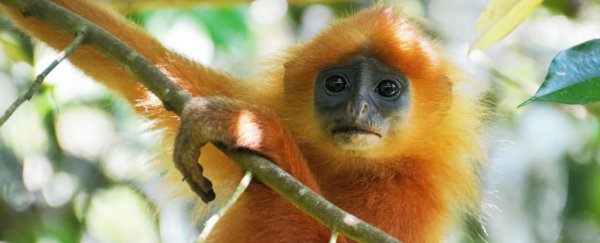Human activities are pushing plants and animals to extinction at a sickening rate. From habitat loss, overfishing and poaching, to global heating and pollution, species are dying out faster than we can comprehend.
A new study by conservation ecologist Haydee Hernandez-Yanez and two colleagues from Alexander Center for Applied Population Biology at Lincoln Park Zoo in Chicago, has identified common traits among plants, birds, or mammals at risk of disappearing – with some unexpected results.
"Certain combinations of life history traits and demographic rates can make a population more prone to extinction than others," explains Hernandez-Yanez of the Woodwell Climate Research Center and colleagues in their paper.
But, as they point out, until only recently, few studies have tested predictions of what makes one species more vulnerable to the next across diverse taxonomic groups using real-world data on a global scale.
Patterns and timing of survival, growth and reproduction all factor into whether populations of plants and animals can withstand or adapt to an onslaught of human-made environmental change.
In this new study, Hernandez-Yanez and team compiled data on growth rates, lifespans and reproduction for 159 species of herbaceous plants, trees, mammals, and birds, and crosschecked the species' most current endangered status from the IUCN Red List, the world's foremost record of threatened species.
"Despite our relatively small sample of species, we found that species with certain demographic patterns are more at risk of extinction than others, and that the important predictors differed between taxonomic groups," writes the trio of researchers.
For example, mammals that have longer generation times are most at risk of extinction, perhaps because the longer it takes species to mature and reproduce, the harder it is for them to adapt to rapid environmental change – and especially if animals only reproduce once in their lifetime.
Meanwhile birds that reproduce often and grow fast, from chicks to fledglings to mature adults, are more vulnerable to extinction, which was somewhat unexpected – you might think producing lots of offspring ups a species' survival odds.
In contrast, other studies have found birds with smaller clutch sizes face greater extinction risks, so the data vary and differences might reflect the many ways reproduction can be measured, the researchers note.
When it comes to species similarities among plants, soft-stemmed herbaceous perennials – the type that die back before winter and bloom in springtime and summer – are more likely to perish if they mature early and have high survival rates as juvenile seedlings. No clear patterns were observed for endangered woody trees, though.
"After all, deforestation for growing crops and urbanization do not discriminate among tree species," Hernandez-Yanez and colleagues write.
The findings add to those of another recent study predicting extinction risk which found species that sit atop the food chain, have sparse populations, or small geographic ranges are most vulnerable.
But these types of studies are often limited by the scope of the IUCN Red List, which captures only a fraction of endangered species – mostly within highly threatened biodiversity hotspots – and is heavily skewed towards birds and mammals.
Amphibians, for example, are among the most vulnerable, with a third of all known amphibian species facing extinction and thousands of species not yet assessed by the IUCN or lacking data to do so.
And that's before we get to insects and other invertebrates that pollinate plants, disperse seeds and cycle nutrients through ecosystems – and the innumerable species yet to be discovered which are going extinct faster than we can describe them.
"Most of these extinctions are unrecorded, so we do not even know what species we are losing," conservation ecologists Elizabeth Boakes and David Redding wrote in a 2018 article describing the "incalculable loss".
All of which is to say, try as scientists might, we are most likely underestimating the true extent of biodiversity loss and extinction risk. Nearly 350 herbaceous plant species analyzed in the current study had no IUCN status
Conservationists refuse to bury their heads in the sand when the threat is nigh and the stakes are high. We know what needs to be done to curb biodiversity loss and protect endangered species; it's whether or not we can turn the extinction tide before it's too late.
Acknowledging this, Hernandez-Yanez and colleagues hope that a better understanding of what traits put plants and animals at most risk of disappearing helps with conservation efforts. The findings could be used to assess which species are more or less vulnerable to extinction, especially when abundance data is lacking.
The research was published in PLOS One.
